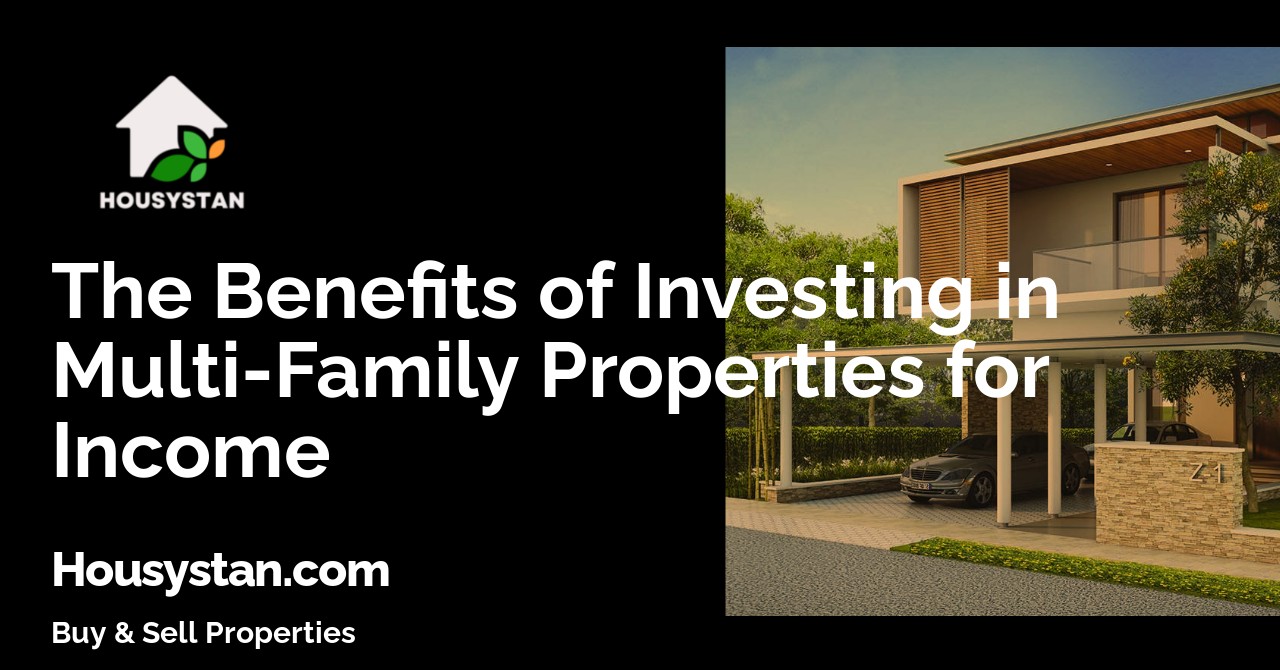The Benefits of Investing in Multi-Family Properties for Income
Read latest blogs and articles from Housystan

The Information mentioned here was last updated on:
30/11/2025The Benefits of Investing in Multi-Family Properties for Income
Investing in real estate has long been considered a reliable way to build wealth. Among the various options available to investors, multi-family properties stand out as a particularly appealing choice. These are residential buildings with two or more separate living units, such as duplexes, triplexes, and apartment complexes. This type of real estate investment offers numerous advantages, especially for those seeking to generate a steady stream of income.
Understanding Multi-Family Properties
- Verified Tenants/Buyers
- Unlimited Property Listing
- Zero subscription/charges fee
First, let’s take a closer look at what multi-family properties entail. Unlike single-family homes, which are designed for one family or tenant, multi-family properties house multiple families or tenants under one roof or in closely situated units. This characteristic not only diversifies the tenant base but also reduces risk for the investor. When tenants are spread across multiple units, the impact of a single vacancy is minimized, cushioning the investor's income stream.
Consistent Cash Flow
One of the primary reasons investors are attracted to multi-family properties is the potential for generating consistent and reliable cash flow. With multiple units rented out, the combined rental income can cover the property’s expenses, mortgage payments, and often leave surplus income for the investor. This steady cash inflow can be more predictable and stable than the income from single-family rentals, where a single vacancy can lead to zero cash flow.
Economies of Scale
Managing a multi-family property can also offer economies of scale. Maintenance, repairs, and management costs per unit tend to decrease as the number of units increases. Whether hiring a property management company or dealing with it independently, the relative cost per unit drops as multiple units can be managed together rather than individually. This efficiency translates into better profit margins and can make the management of the investment more straightforward and efficient.
Tax Advantages
Investors in multi-family properties can benefit from several tax advantages. Depreciation, a method used to account for the decrease in value of an asset over time, can be applied to the property, which helps reduce taxable income. Additionally, investors can deduct mortgage interest, property taxes, and operating expenses from their taxable income, further enhancing the property's financial appeal.
Easier Financing Options
Lenders often view multi-family properties as a lower-risk investment, which can lead to more favorable financing conditions. Since these properties are valued based on their income potential rather than solely on comparable sales, lenders tend to offer better loan terms. This perception can make securing financing for multi-family investments easier compared to single-family properties, where financing terms might be stricter and less flexible.
Potential for Appreciation
Real estate, in general, has the potential to appreciate over time, and multi-family properties are no exception. Demand for rental properties continues to be strong, driven by factors like urbanization and lifestyle preferences, which can lead to increased property values. An investor who strategically acquires and manages a multi-family property can benefit from both capital appreciation and rental income growth over time.
Mitigating Risks
While all investments come with risks, multi-family properties offer a way to mitigate them. Having multiple tenants means that the impact of non-payment or vacancies is less severe compared to a single-family unit where the entire income is dependent on one tenant. By spreading the risk across several tenants, investors can maintain a stable income stream even if one or two units become vacant.
Creating Value through Improvements
Investors can enhance the value of their multi-family properties through strategic improvements. Renovations, upgrades, and enhanced amenities can attract higher-quality tenants and justify higher rental rates, increasing the property’s overall income. Savvy investors look for properties where they can add value, thereby increasing both the short-term cash flow and long-term property value.
Portfolio Diversification
Adding multi-family properties to an investment portfolio can offer diversification benefits. Real estate often behaves differently from stocks and bonds, potentially providing stable returns in turbulent market conditions. As part of a well-rounded investment strategy, multi-family properties can help balance risks and returns, offering stability and growth possibilities.
Professional Property Management
Due to the scale of multi-family properties, investors often find it feasible to hire professional property management. Having a dedicated management team allows investors to enjoy passive income without the day-to-day responsibilities of being a landlord. This professional oversight can improve tenant satisfaction, reduce vacancy rates, and optimize property operations.
Access to a Robust Rental Market
The demand for rental housing remains strong, making multi-family properties a resilient investment choice. Economic shifts, changing demographics, and lifestyle preferences continue to fuel rental demand. As more people opt for the flexibility of renting, particularly in urban areas, multi-family properties are well-positioned to capture this demand.
In summary, investing in multi-family properties offers numerous benefits, from consistent cash flow and risk mitigation to tax advantages and potential appreciation. By understanding these advantages and strategically managing their investments, investors can unlock the potential of multi-family properties as a reliable income source and a valuable part of their investment portfolio. The next time you consider how to build wealth through real estate, multi-family properties might just be an option worthy of exploration.